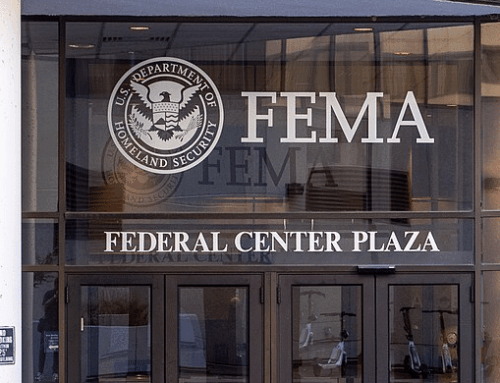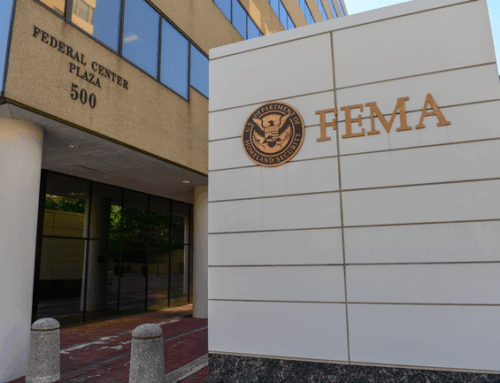The 2025 Atlantic hurricane season could be one of the worst in decades. The National Oceanic and Atmospheric Administration gives a 60% chance of above-normal activity, citing unusually warm ocean temperatures and weak wind shear—ideal conditions for more frequent and more powerful storms. Up to 19 named storms are expected, including as many as five major hurricanes.
And though the science has improved, federal funding for disaster response has not. At the center of the storm is the Disaster Relief Fund (DRF), the Federal Emergency Management Agency’s primary source of money for disaster response. By FEMA’s own estimates, the fund is set to run dry by August, with a projected shortfall of $7.8 billion just as hurricane season hits its peak.
That warning clashes with recent claims from the White House. In a briefing from the Oval Office, the president’s budget director, Russ Vought, insisted the DRF remains “flush”—citing its April balance while ignoring FEMA’s forecast of future obligations. This isn’t a harmless accounting discrepancy. If Congress isn’t formally asked to replenish the fund, FEMA will begin halting long-term recovery projects. It has before, freezing reimbursements in recent hurricane seasons to conserve cash for emergency response. This year could prove worse.
President Trump has said he intends to “phase out” FEMA after the 2025 season, transferring its responsibilities and funding to the states. Officials have also suggested raising the threshold for presidential disaster declarations—changes that would have disqualified most of the federal disaster declarations made since 2008. This would have shifted as much as $41 billion in public assistance costs to state and local governments. The administration has proposed cutting the agency by $646 million in the FY2026 budget and the elimination of the Building Resilient Infrastructure and Communities (BRIC) program after quietly ending hazard mitigation grants in April.
That decision didn’t just nix a line item—it stranded people and projects already in motion. Scranton, Pennsylvania, lost a $2.7 million buy-out that would have cleared 18 flood-wrecked homes; Crisfield, Maryland, saw a $36 million seawall and drainage overhaul collapse; Stillwater, Oklahoma, is hiking water rates to replace a vanished $19.6 million grant. In all, $4.5 billion in BRIC funding has simply disappeared, leaving local officials—from Republican mayors to Democratic governors—pleading with Congress to revive the money.
Refilling the coffers, though, won’t cure the deeper ailment. Even when money is available, navigating FEMA’s bureaucracy can feel like surviving a second disaster. FEMA’s delays, red tape, and uneven aid decisions are real—and worth fixing. But those flaws call for a scalpel, not a sledgehammer. Since Hurricane Hugo in 1989 the federal share of disaster costs has ballooned, partly because governors have incentives to chase major disaster declarations. We have long argued for stronger state and local skin in the game—better planning, tougher codes, meaningful mitigation—while keeping a federal backstop for catastrophes that truly overwhelm local capacity.
At its best, a major disaster declaration is federalism in motion—the moment the rest of the union rallies when one state’s defenses are shattered. When floodwaters swamp a local emergency operations center or a wildfire torches the supply depot, the declaration signals that home-grown capacity is spent and outside muscle is required. It isn’t charity; it’s the pact we make to share risk and resources so no state faces disaster alone.
But that promise works only if the federal first responder still has its own boots on the ground—and FEMA’s ranks are thinning fast. Roughly 20% of FEMA’s permanent staff, including key disaster response leaders, are leaving ahead of hurricane season amid a politically driven staff reduction. Key posts remain vacant. And a newly formed FEMA Review Council—chaired by Homeland Security Secretary Kristi Noem and Defense Secretary Pete Hegseth—is reportedly weighing a full dismantling of the agency.
Some in Congress are responding. The FEMA Independence Act of 2025 would remove FEMA from the Department of Homeland Security and reestablish it as an independent, cabinet-level agency. It would consolidate existing authorities under a Senate-confirmed director and reaffirm FEMA’s mission to lead disaster preparedness, response, and mitigation. Another bill zeroes in on the grant program the White House erased.
The House Transportation & Infrastructure Committee has floated its own alternative. The Fixing Emergency Management for Americans Act of 2025 is a discussion draft unveiled by Chair Sam Graves (R-MO) and Ranking Member Rick Larsen (D-WA). Rather than scrap FEMA, the bill would similarly pull the agency out of the Department of Homeland Security and restore its cabinet-level status. It would also create a “Recovery Task Force” to close out more than a thousand still-open disasters dating back to Katrina, and let FEMA ratchet the federal cost-share up or down depending on how seriously a state invests in mitigation. That sliding-scale approach rewards what we’ve been hammering on like a broken record: spending smart before the storm cuts both the human toll and the cleanup bill.
Budget brinkmanship over FEMA’s funding has plagued both Republican and Democratic administrations. This cycle is not new. But climate change is raising the stakes. Disasters are more frequent, more severe, and more expensive. FEMA has tried to adapt, investing in tools to better predict storm surges and flash floods. But no algorithm can replace money. The DRF is not a rainy-day fund—it is the engine of the federal disaster response. And right now, the engine is sputtering.
For taxpayers, this is not about generosity. It is about readiness. Every dollar FEMA spends on mitigation and preparation reduces the cost of recovery. Letting the fund lapse—or pretending it is solvent when it is not—will only make the eventual bill higher. Congress still has time to act. Storms are coming, and the response system is already underwater.









